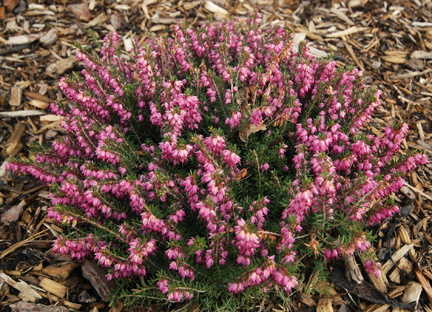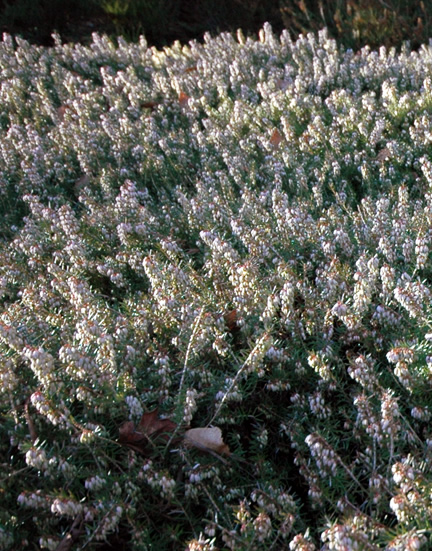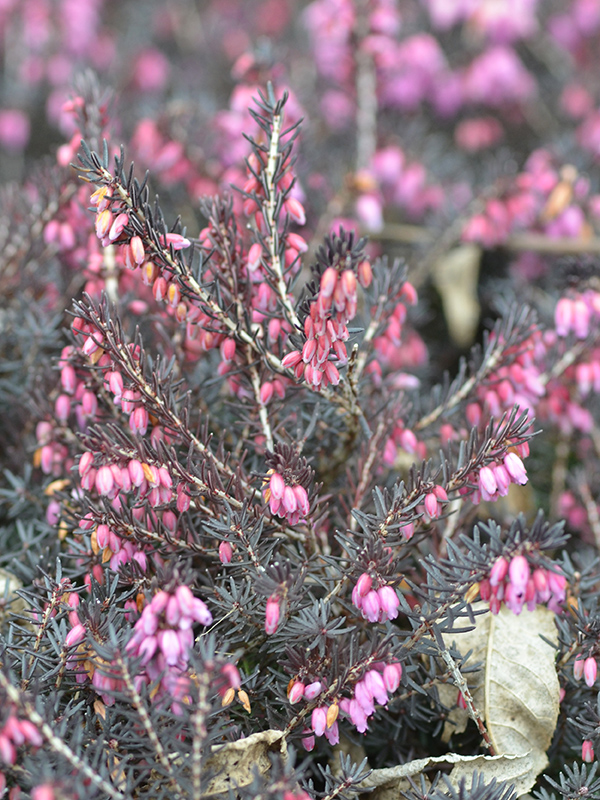| Shape | Low, spreading. |
| Landscape | Great in a rock garden, in front of foundations or used as a ground cover. |
| Cultivation | Requires moist, acidic, well-drained soil, full sun and semi shade in hot climates. Plants should not be allowed to dry out neither should they sit in wet or waterlogged soils.
Shear new yearly plantings to encourage broad spreading growth. Older plantings could be trimmed immediately after flowering to promote compactness and encourage fresh, bushy growth.
|
| Pests | Pests might include vine weevil and aphids. Rabbits may feed on new shoots while voles may cause some girdling of branches especially under cover of snow. Fungal diseases may be a problem if the plants are stressed due to waterlogging or drought. They may include root rots such as Pythium and Phytophthora and foliage diseases such as Rhizoctonia and Botrytis.
|
| Leaf Description | Opposite, needle-like, evergreen, 8.5 mm long, acute to apiculate, in whorls of 4. |
| Flower Description | Perfect, cylindric, 4-lobed corolla, 5 mm long, dark red anthers, white to red in colour, bees love them. |
| Fruit Description | Dehiscent capsule with many seeds. |
| Texture Description | Finely textured. |


